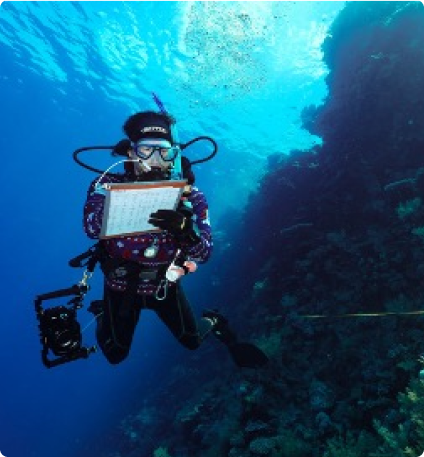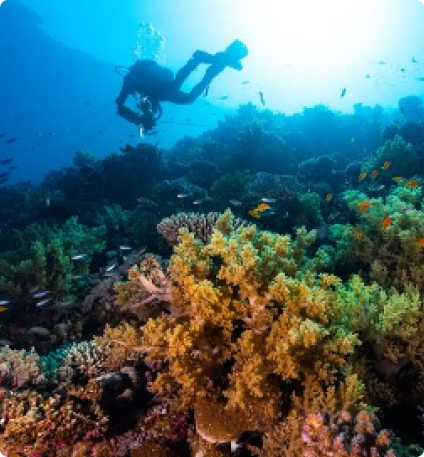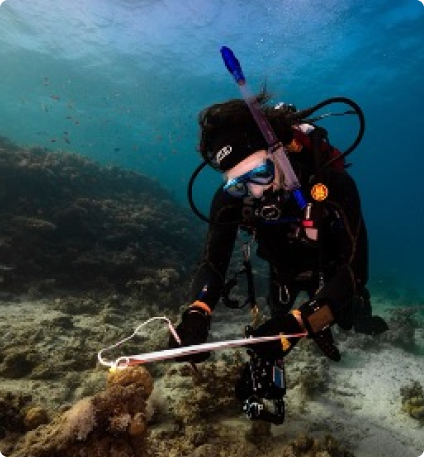Observations and experiments (in situ as well as in the lab) to support the development of regulations and help guide management actions to minimize negative impacts stemming from anthropogenic actions such as coastal development, point-source pollution, or global stressors such as climate change.
- Sustained Integrated Observations: We have established a network of permanent sites throughout the Kingdom of Saudi Arabia to assess the status of marine ecosystems through time. Using these sites, we are able to evaluate local and global anthropogenic impacts and develop ecological indicators which can be used across the country and beyond.
- Lab-based observations: We are conducting manipulative lab experiments to better understand the responses of important Red Sea taxa to environmental drivers associated with anthropogenically-mediated environmental change. Our focus is primarily on understanding the potential effects of chemical compounds that are used in pharmaceuticals and personal care products (eg., UV-filters) as well as desalination processes (e.g., antiscalants). Additionally we are interested in the response of organisms to a combination of these chemical compounds, global change indicators(e.g., temperature, ocean acidification, coastal darkening) and other environmental changes related to pollution (eg., salinity changes).
- Field experiments: Building off our lab-based studies, future field experiments will evaluate the response of different organisms and communities to compounds of interest (e.g pharmaceuticals and personal care products, antiscalants) through in-situ inoculations.
- Collection of water, sediments, and marine organisms: While one aspect of our permanent sites is to determine longer-term changes in community structure at the macro-scale, there are many components of this structure which respond rapidly to changes in the environment (i.e. weeks or months rather than years). These smaller-scale components include the bacterial, coral, and algal communities. In order to understand these rapid changes within these sub-communities, we take many different samples and collections while in the field which help us to assess, for example, the bioaccumulation of certain pollutants (eg., heavy metals, UV-filters). Furthermore, in order to characterize the environmental variability of the survey sites (e.g. chlorophyll, nutrients, heavy metals, organic compounds), we collect water and sediment samples. . Depending on the question at hand, sampling efforts can be carried out at different time points or at different depths. Sites with potentially higher anthropogenic effects such as desalination plants, tourism hot-spots and sewage release are specifically targeted for some projects.
- Assessing the metabolic stress response of reef organisms using biogenic volatile organic compounds: When organisms experience physiological stress, such as from anthropogenically-derived pollution or temperature change, their physiological stress responses often result in the creation of volatile compounds. We are interested in better understanding which organisms produce which volatile compounds and under which conditions. The overall aim of this project is to establish a database of “volatile signatures” of Red Sea reef organisms. Such a library could help us monitor the overall health of Red Sea reefs simply by collecting water samples and analyzing the volatile compounds collected therein. Such monitoring efforts would not only be a potentially fast way to monitor large areas, but also prevent repeated destructive sampling on already degraded reefs.






